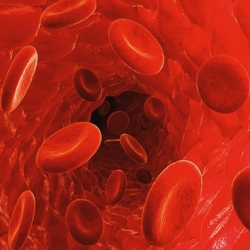
Levels of specific biomarkers in the blood, can be combined to produce patterns that signify how well a person is aging and his or risk for future aging-related diseases, according to a new study by researchers at the Boston University School of Public Health (SPH), BU School of Medicine (MED), and Boston Medical Center.
The study, published online in the journal Aging Cell, used biomarker data collected from the blood samples of almost 5,000 participants in the Long Life Family Study, funded by the National Institute on Aging (NIA) at the National Institutes of Health.
The researchers found that a large number of people, about half, had an average “signature,” or pattern, of 19 biomarkers. Smaller groups of people had specific patterns of those biomarkers that deviated from the norm and were associated with increased probabilities of association with particular medical conditions, levels of physical function, and mortality risk eight years later.
For example, one pattern was associated with disease-free aging, another with dementia, and another with disability-free aging in the presence of cardiovascular disease.
In all, the researchers generated 26 different predictive biomarker signatures. Instances where similar biomarker data were available from the Framingham Heart Study allowed for about one-third of the signatures to be replicated.
“These signatures depict differences in how people age, and they show promise in predicting healthy aging, changes in cognitive and physical function, survival and age-related diseases like heart disease, stroke, type 2 diabetes, and cancer,” the authors say.
They indicate that their analysis “sets the stage for a molecular-based definition of aging that leverages information from multiple circulating biomarkers to generate signatures associated with different mortality and morbidity risk,” adding that further research is needed to better characterize the signatures.
